Design Patterns in Programming
Hey there! Let's dive into some fundamental design patterns in programming that every developer should know.
10/17/20243 min read


Design Patterns
Hey there! Let's dive into some fundamental design patterns in programming that every developer should know. Whether you're just starting out or have been coding for years, these patterns are essential tools to write efficient and maintainable code.
1. Singleton Pattern
Problem: You need to ensure a class has only one instance throughout the application.
Real-Life Example: Imagine a company has a single CEO. No matter how many times you ask for the CEO, you should always get the same person.
Solution: Implement the Singleton pattern to control object creation.
Example in Python:
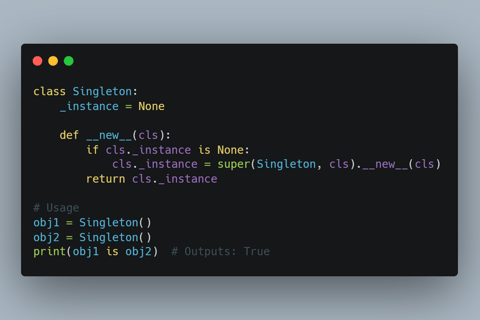

Example in JS:
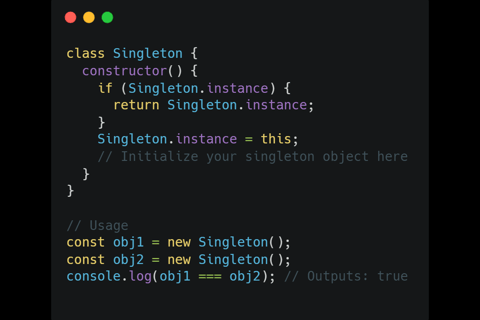

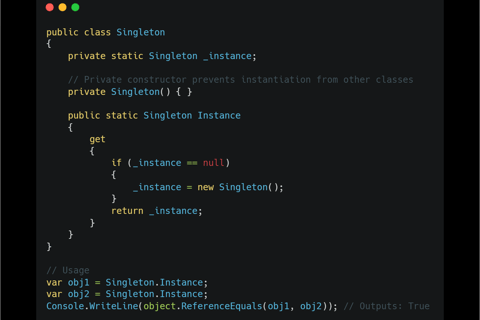

Example in CS:
2. Observer Pattern
Problem: You want objects to be notified when another object's state changes.
Real-Life Example: Think of a newspaper subscription. When a new edition is published, all subscribers receive it automatically.
Solution: Use the Observer pattern to create a subscription mechanism.
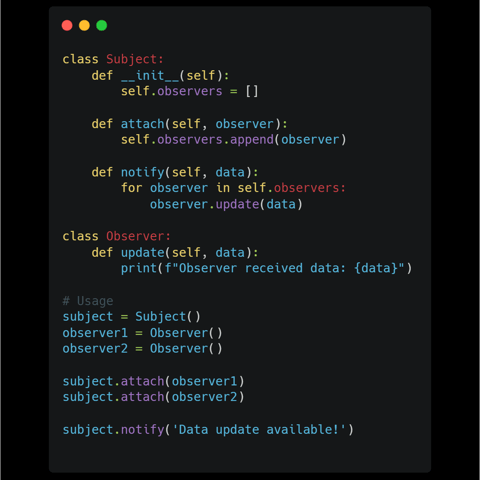

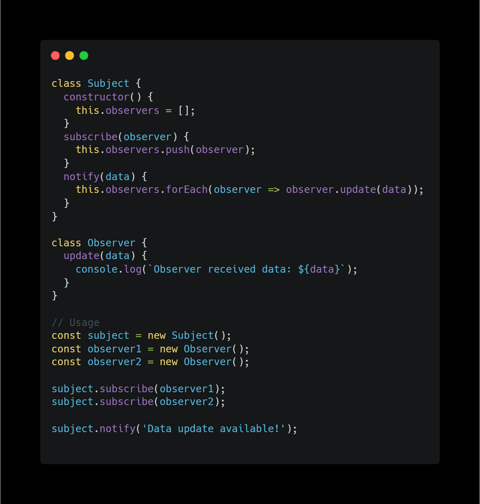

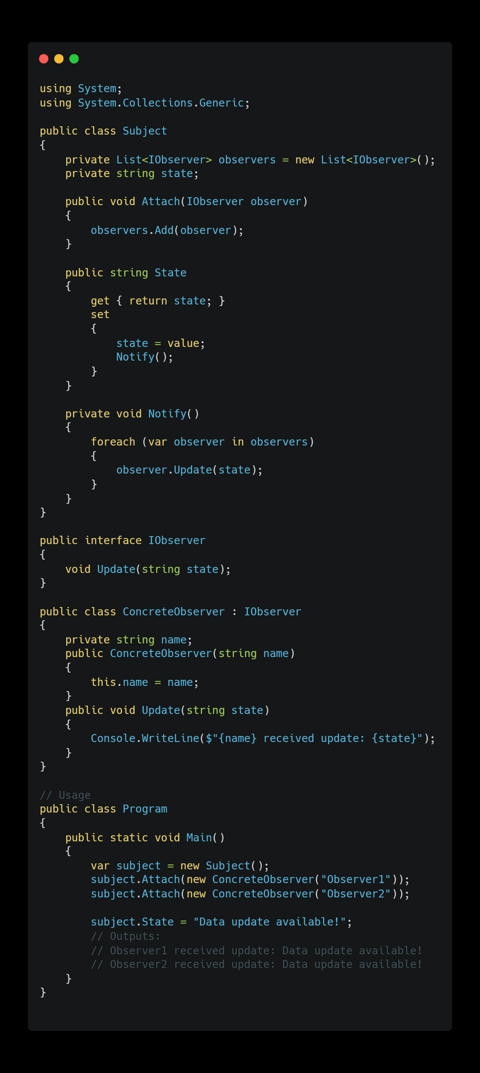

3. Strategy Pattern
Problem: You need to select an algorithm's behavior at runtime.
Real-Life Example: Consider a navigation app that can provide directions via car, bicycle, or walking. You can select the mode of transportation at runtime.
Solution: The Strategy pattern lets you define a family of algorithms and choose one at runtime.
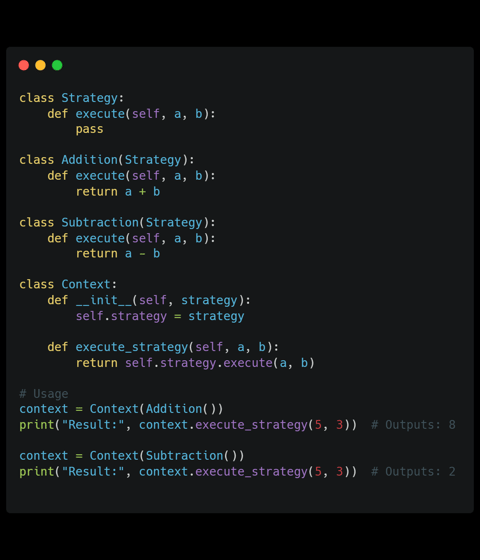

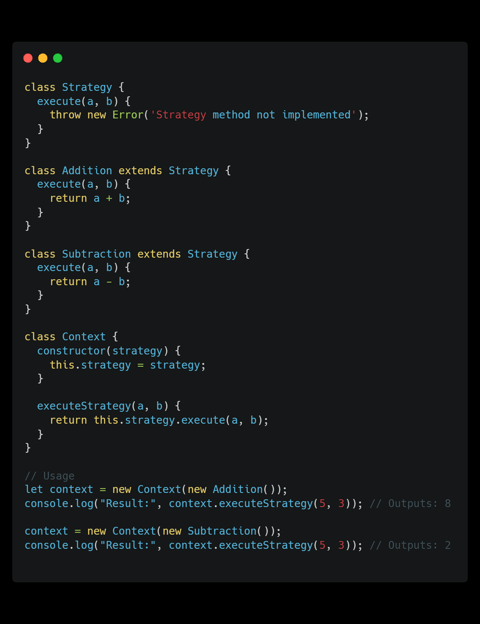

Summary
Singleton Pattern:
Purpose: Ensures a class has only one instance.
Real-Life Analogy: A single government in a country.
Usage:
Resource management (e.g., database connections).
Logging systems.
Observer Pattern:
Purpose: Allows objects to be notified of state changes in other objects.
Real-Life Analogy: Social media notifications when someone you follow posts new content.
Usage:
Event handling systems.
GUI frameworks where changes in one component should reflect in others.
Strategy Pattern:
Purpose: Enables selecting an algorithm's behavior at runtime.
Real-Life Analogy: Payment methods at a store (cash, credit card, mobile payment).
Usage:
Sorting algorithms that can be swapped.
Validation strategies in form inputs.
Key Benefits:
Code Reusability: Encourages the use of tried-and-tested solutions.
Maintainability: Easier to update and manage code.
Flexibility: Allows for dynamic behavior changes without altering the codebase significantly.
Readability: Improves code organization, making it easier to understand.
Design patterns are like the essential tools in a developer's toolkit—they help you solve common problems efficiently. By incorporating these patterns into your projects, you'll write code that's not just functional but also elegant and scalable.
Happy coding!
